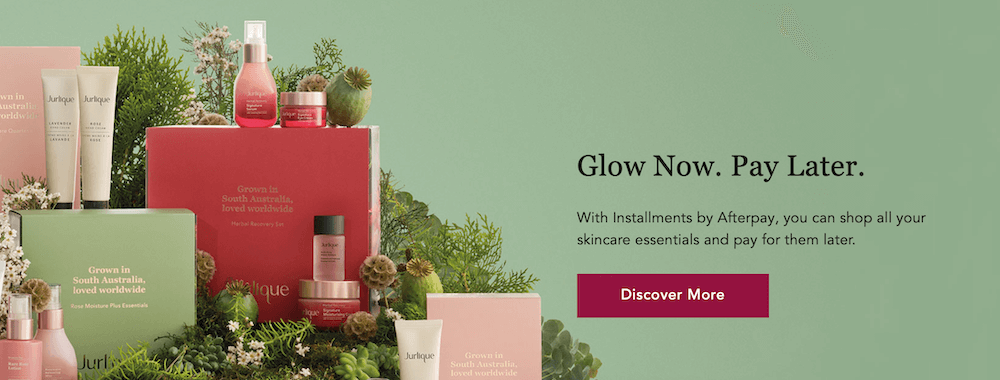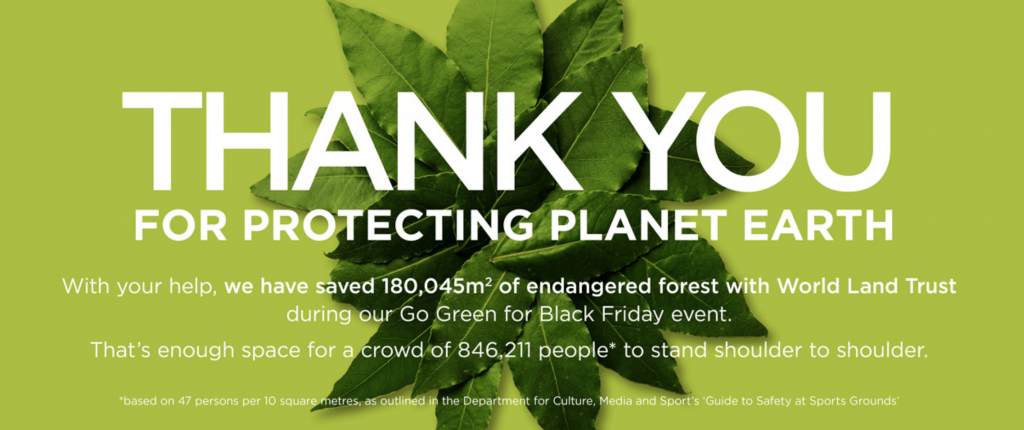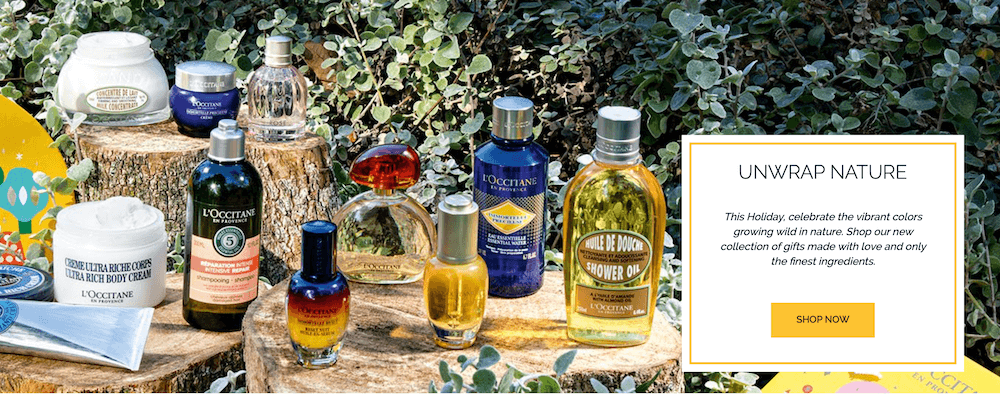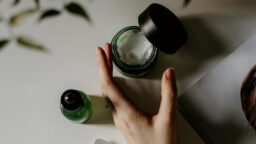From Kesha revealing her natural face full of freckles to Kardashians sharing no-makeup videos, 2019 is the year for a natural, makeup-free kind of beauty.
As celebrities embraced their natural selves online, social media soon followed and hashtags like #nomakeup, #nofilter went buzzing.
Naturally, consumers started to invest in skincare, but not just any skincare. With millennials and Gen Zs now making up half of American consumers, consumers started to demand and respond to sustainable skincare.
According to the NPD Group, within the U.S. prestige beauty industry that reached $18.8 billion in 2018, the skincare category grew by 13 percent and contributed 60 percent of the industry’s total gains.
Out of $6.5 billion worth of skincare sales in 2018, natural brands, which accounts for $1.6 billion, remained the top contributor to the sales growth.
“Knowledge is power. There has never been a time where young people had more knowledge about sustainability and access to information on companies and what they are doing to help create a healthy planet,” Maria Davis, a marketing director at Jurlique USA, a sustainable skincare brand based in Australia, told The University Network (TUN).
All across the globe, both big name and starting brands are bringing out their shade of green with products that are kind to both the natural skin and our Earth.
Changing up
Despite today’s surging demand and supply of sustainable skincare, the skincare industry had and still has many shortfalls regarding sustainability.
First, the most basic ingredients are sourced unsustainably. Most skincare products require a lot of water to make and can cause water waste. Also, palm oil, which is used in 70 percent of all cosmetics, can cause widespread deforestation and has led to decimated rainforests and deforestation in countries like Indonesia and Malaysia.
And deforestation accounts for more carbon emissions than cars and trucks in the world combined, according to the World Carfree Network.
Addtionally, other ingredients that are widely used in skincare industry, such as shea butter, silk, vanilla and cocoa are often sourced in dangerous working conditions and may include human trafficking and child labor.
Second, stemming from a false belief that more is better, both the industry leaders and consumers have grown a habit of overconsumption.
Starting from around 2012, K-Beauty entered into the global skincare market, creating an instant hit. A K-Beauty star would come out and show her 8-step skincare routine that would differ in products for day and night. And disregarding their unique skin type, consumers would fill their shelves with the same products the star used.
However, the truth is that with more layers, just like makeup, there’s a higher risk of your pores getting clogged and you breaking out as a result.
“Layering multiple products doesn’t mean you’ll increase the benefits to the skin. Chances are, you’re increasing the likelihood of the different active ingredients inactivating each other,” Brian Oh, founder of Venn, a minimalist skincare brand, told the Guardian.
Also, other products of K-Beauty, such as single-use sheet masks and cleansing wipes, are dubbed as the plastic straws of beauty industry in terms of their harmful environmental impact.
Third, due to the fragile nature of the products, excessive packaging is hard to avoid and often leads to improper recycling or recycling contamination.
According to Zero Waste Week data in 2018, more than 120 billion units of cosmetics packaging were produced globally, the majority of which were not recyclable.
And according to the U.S. Environment Protection Agency, out of 14.5 million tons of plastic containers and packaging generated in 2017, around 70 percent wasn’t properly recycled and went to landfills.
Rising demand
Fortunately, consumers’ demand for sustainable skincare is strong enough to hit the breaks for brands who would have continued with their unsustainable practices.
The general demand for natural and organic skincare is already high.
Specifically, millennials and Gen Zs are increasing in both number and purchasing power. And these growing influential consumers expect companies to value and apply sustainability in their business practices.
According to The Business of Fashion, 66 percent of global millennials are willing to spend more on brands that are sustainable and more consumers are expected to demand that brands be held accountable for waste and carbon footprint.
And a 2018 study by WP Engine revealed that 69 percent of Gen Z consumers are more likely to buy from a company that contributes to social causes, while 33 percent have stopped buying from those with values different from their own.
“They (younger consumers) are very aware, conscious about what they consume and add to landfills in general. There is a new much more alert awareness of that generation,” a Kjaer Weis representative told TUN.
Brands are responding
Both starting and big name skincare brands are responding in their own ways.
Jurlique

Founded in 1985, Jurlique is a sustainable skincare with a business statement to preserve the integrity of nature. From its biodynamic farm and clean energy Natural Beauty Plant, both powered by 75 kilowatt solar panels, Jurlique grows and harvests its ingredients sustainably.
Since 2016, Jurlique’s farm has sent zero waste to landfill. Since 2015, Jurlique has not only reduced 20 percent of transport emissions through its freight management initiative, but also reduced its water usage by 18 percent by using rain and recycled water.
“Sustainability has always been fundamental to everything we do here. From our biodynamic farm and clean energy Natural Beauty Plant in the Adelaide Hills, to our commitment to reducing our carbon cycle and looking after our people, sustainability is at the core of Jurlique,” said Davis.
Jurlique hopes not only to be transparent about its business, but also to educate its customers on what they can do on a daily basis to become more eco-friendly.
“Our focus is on transparency and education,” Davis said. “We want to continue to provide honest information to customers about our production and manufacturing processes. As new technology becomes available, we will continue to improve our processes and adopt better ways of creating formulas and packaging.”
Kjaer Weis
Founded by a veteran make-up artist Kirsten Kjaer Weis, Kjaer Weis is mainly a sustainable makeup brand, but it has a sustainable skincare line as well.
“Our founder Kirsten Kjaer Weis, who is a 20-year make-up artist veteran, saw an open gap in the market for a make-up line without compromises on ingredients’ performance and luxury. It didn’t exist,” said a Kjaer Weis representative.
Ninety-five percent of Kjaer Weis’s ingredients come from organic farming, meaning they don’t add chemicals to the soil. And all of its products are refillable, meaning their package does not need to be thrown away after a few months.
Additionally, with a purchase of both cleanser and toner, Kjaer Weis offers its own organic cleansing cloth, which is made from organic cotton remnants from womenswear brand Loup Charmant, for free. Unlike single-use wipes or cotton pads, organic cleansing cloths can be reused after every wash.
Neal’s Yard Remedies

Founded in 1981, Neal’s Yard Remedies is a UK-based brand that came first in many things. In 2008, it was the first high street retailer to become carbon neutral. In 2014, it was the first health and beauty brand to receive 100/100 for ethics by the Ethical Company Organization.
The brand uses the highest possible percentage of organic ingredients, including ethically sourced herbs, botanicals and essential oils, in all its products.
The brand maintains that sustainability is part of its DNA and is committed to creating its great products in a sustainable and ethical way.
As an example, it uses recyclable blue glass and 100-percent recycled plastic bottles for its products. It also offers refills on two of its products.
L’Oréal USA
Holding brands like Essie, NYX, Garnier, Maybelline, Lancome, Kiehls and more, L’Oréal is one of the big names in the industry. As the largest subsidiary of the group, L’Oréal USA has pledged its plans to achieve carbon neutrality in 2019 for all 21 of its U.S. manufacturing and distribution facilities. Currently, the company has 17 renewable energy installations across the country.
Just last month, L’Oréal finished developing the very first paper-based cosmetic tube, a promising alternative to the majority of plastic packages. Its goal is to release the first model on the market in 2020.
L’Oréal’s business statement stays constant throughout the group’s other brands. For example, in 2011, Garnier partnered with TerraCycle to make previously non-recyclable packaging recyclable, diverting approximately 11.2 million empty packages from ending up in landfills. Also, in all its scrubs, Garnier uses Perlite, a natural alternative to microbeads, which are microscopic plastic beads often used in face and body scrubs and litter our seas.
And one of its luxe brands — Kiehl’s — has a Recycle & Be Rewarded system that gives one travel size product for every 10 empty packages a customer brings back.
Currently, 36 percent of L’Oreal’s products contain at least one sustainably sourced raw material, such as quinoa husk extract in its Nightly Refining Micro-Peel Concentrate or ginger leaf in its Ginger Leaf & Hibiscus Firming Mask.
L’Occitane

For its packages, L’Occitane uses only renewable resources or those that are sourced from sustainably managed forests to make sustainable customized packaging. The brand also has committed to using 100-percent recyclable or compostable packaging by 2025.
From 2010 to 2016, L’Occitane reduced its carbon footprint by 14 percent.
L’Occitane is committed to using natural ingredients in all its products. For example, it uses ethically sourced almond in its Almond Milk Concentrate and ethically sourced and fairly traded shea butter in its popular, enriching Shea Butter Hand Cream.
LUSH
Lush makes some of its packages from a mix of purchased recycled plastic and recycled black pot material. Also, when a customer brings back five empty packages, they will get a free face mask.
To achieve zero waste, Lush sells 35 percent of its products, including soap bars and bath bombs, in a solid form to remove the need for packaging entirely. The other 65 percent of Lush’s products are packaged in either BPA-free or 100 percent post-consumer recycled plastic or metal.
Biotechnology advances
The beauty industry is also using biotechnology to create sustainable skincare products.
An an example, Biossance, a skincare line, makes squalene, a naturally occurring oil traditionally derived from shark livers or olives, from renewable sugarcane instead.
And One Ocean Beauty uses biotechnology to reproduce marine extracts from algae, kelp and seaweed in a lab rather than harvesting them from the sea and tapping into our limited resources.
Into a sustainable skincare lifestyle
The trend is definitely there. The numbers show it.
According to Grand View Research, the global natural and organic cosmetics market reached a revenue of $10.31 billion in 2018 and is expected to reach a value of $48.04 billion by 2025.
However, trends come and go. And for any other trend, coming and going could have been okay. But, this one can’t for our Earth cannot go once and come back another time.
While brands have their responsibilities, consumers also have theirs. They have to turn this trend into a lifestyle.
What can you do?
First, buy only what your skin can take in. Especially for sensitive skin, finding the perfect moisturizer that won’t leave you breaking out is hard. Trust me. I understand. I’m one of you.
The more sensitive you are, the more research you’ll need to do. And once you find your match, stick with it and leave some room for your skin to work its intrinsic power to heal itself. The last thing you want to do is overwhelm your skin with so many products.
Second, once your skincare routine is fixed, recycle your empty skincare products properly. Make sure all containers are clean to avoid recycling contamination. Then, check the labeling and determine how to recycle it.
If unclear, try TerraCycle, a program that offers free recycling for all beauty product packaging, or Return to Origins, a recycling program that takes and recycles all cosmetic containers regardless of brand.



